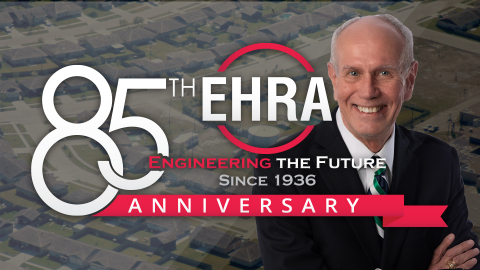

The purpose of this project was to convert the existing at-grade crossing of Brazoria County Road 56 (CR 56) and State Highway 288 (SH 288) into a diamond interchange that includes a new overpass bridge. Coordination with TXDOT, area landowners, utility companies, and Brazoria County was integral in obtaining approval and acceptance of the project.
EHRA performed preliminary drainage area delineations for nine creek crossings and calculated approximate 100-year flows for each culvert crossing. Culvert structures were sized for each of the six crossings, ranging from 48” round pipe culverts up to dual 5’x5’ box culverts.
Engineering design and construction phase services of water, sewer, drainage and paving for four subdivision sections and off-site channel (123 acres out of a 400 acre subdivision). There was 60-feet of elevation difference on this site and wooded lots were left in their natural state which required the installation of retaining walls.
EHRA was selected as one of two firms to provide professional surveying services under contract to Houston Community College System.
EHRA planners, hydrologists and landscape architects worked together to propose an alternative use for the space, re-developing the basin into an amenity pond. EHRA carefully selected native plant materials for both their ability to survive in the harsh conditions of the basin as well as providing filtration for improved storm water quality.
One of the most rewarding elements of being a civil engineer is the opportunity to make a mere idea into a reality. We are the unseen problem solvers of infrastructure from the ground up. Our projects impact millions of lives, regardless of size or scope. The importance and gravity of our work means we can only put our stamp of approval on projects that reflect the very best we can produce, which should be every project we produce.
When a project is presented to EHRA, it is our responsibility to see it through to completion. The process begins with the decision to either move forward or respectfully pass. Although no engineer wants to turn down work, we must always keep the project and client’s best interests in mind. This includes understanding personal and firm bandwidth, resources, and principles. We should not agree to do execute a project if we see it is not the best course of action for the client. One must explain his or her position and objections to the client and ultimately suggest solutions that satisfy the requirements of both parties.
Once a civil engineer decides to pursue a project, it is unacceptable to simply delegate to another and relieve oneself of all responsibility. Delegation can be an effective management tool and is often a useful teaching method. However, delegation still requires the support of an invested leader. A responsible leader will trust their team to progress and also remain involved to a degree to guide and encourage. Clients deserve our time and attention to detail. Ideally, we should be able to provide a client an accurate status update immediately upon request.
In any industry, a common and indisputable fact is that “time is money.” Given this truth, it is crucial for engineers to be realistic and transparent about a project’s schedule. Expectations should be established at the onset. When unforeseen roadblocks occur, it is the engineer’s obligation to communicate schedule setbacks to the project owner and to provide a revised completion date.
Engineers are known to be a special breed. We are perfectionists. Because of this, it is often difficult to accept and admit our failures or imperfections. However, when an unfortunate error occurs, it is in the best interest of all involved that the engineer communicates the mistake, agree to make it right, and learn to never do it again. Although arguably the most effective, failure is by far the most difficult learning method.
As in life, project outcomes reflect the effort and attitude we dedicate to them. One must be genuinely concerned about the absolute success of every project, not just project completion. Concern leads to action with purpose, and the most promising projects are delivered by an engineer with passion and perseverance.
Lastly, after all the sweat and tears to make a project a success are spent, it is an absolute necessity that one take the time to enjoy his or her efforts. Being a civil engineer is an incredible journey and honor. We design and construct truly dynamic projects that change the world around us. The recognition of how one’s hard work impacts others is what makes our disappointing days worth it. Knowing the true value of our efforts is what makes being a civil engineer so gratifying.
